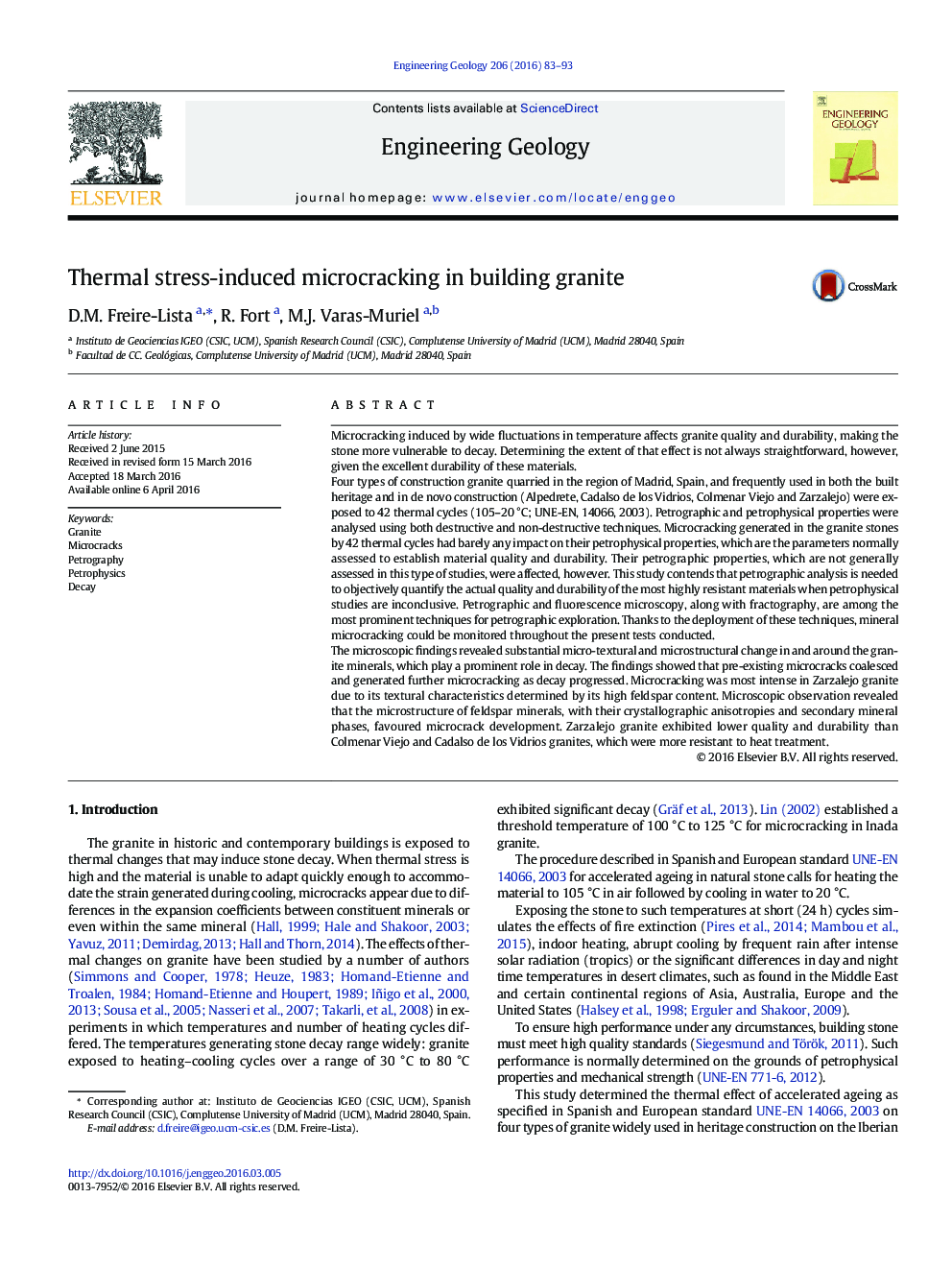| کد مقاله | کد نشریه | سال انتشار | مقاله انگلیسی | نسخه تمام متن |
|---|---|---|---|---|
| 4743223 | 1641779 | 2016 | 11 صفحه PDF | دانلود رایگان |
• Petrographic techniques determined granite quality.
• Granite petrophysical properties were barely affected by thermal stress.
• Granite mechanical properties vary scantly with thermal stress.
• The granite texture determined the granite decay.
• Petrographic studies are needed to assess granite quality and durability.
Microcracking induced by wide fluctuations in temperature affects granite quality and durability, making the stone more vulnerable to decay. Determining the extent of that effect is not always straightforward, however, given the excellent durability of these materials.Four types of construction granite quarried in the region of Madrid, Spain, and frequently used in both the built heritage and in de novo construction (Alpedrete, Cadalso de los Vidrios, Colmenar Viejo and Zarzalejo) were exposed to 42 thermal cycles (105–20 °C; UNE-EN, 14066, 2003). Petrographic and petrophysical properties were analysed using both destructive and non-destructive techniques. Microcracking generated in the granite stones by 42 thermal cycles had barely any impact on their petrophysical properties, which are the parameters normally assessed to establish material quality and durability. Their petrographic properties, which are not generally assessed in this type of studies, were affected, however. This study contends that petrographic analysis is needed to objectively quantify the actual quality and durability of the most highly resistant materials when petrophysical studies are inconclusive. Petrographic and fluorescence microscopy, along with fractography, are among the most prominent techniques for petrographic exploration. Thanks to the deployment of these techniques, mineral microcracking could be monitored throughout the present tests conducted.The microscopic findings revealed substantial micro-textural and microstructural change in and around the granite minerals, which play a prominent role in decay. The findings showed that pre-existing microcracks coalesced and generated further microcracking as decay progressed. Microcracking was most intense in Zarzalejo granite due to its textural characteristics determined by its high feldspar content. Microscopic observation revealed that the microstructure of feldspar minerals, with their crystallographic anisotropies and secondary mineral phases, favoured microcrack development. Zarzalejo granite exhibited lower quality and durability than Colmenar Viejo and Cadalso de los Vidrios granites, which were more resistant to heat treatment.
Journal: Engineering Geology - Volume 206, 17 May 2016, Pages 83–93
